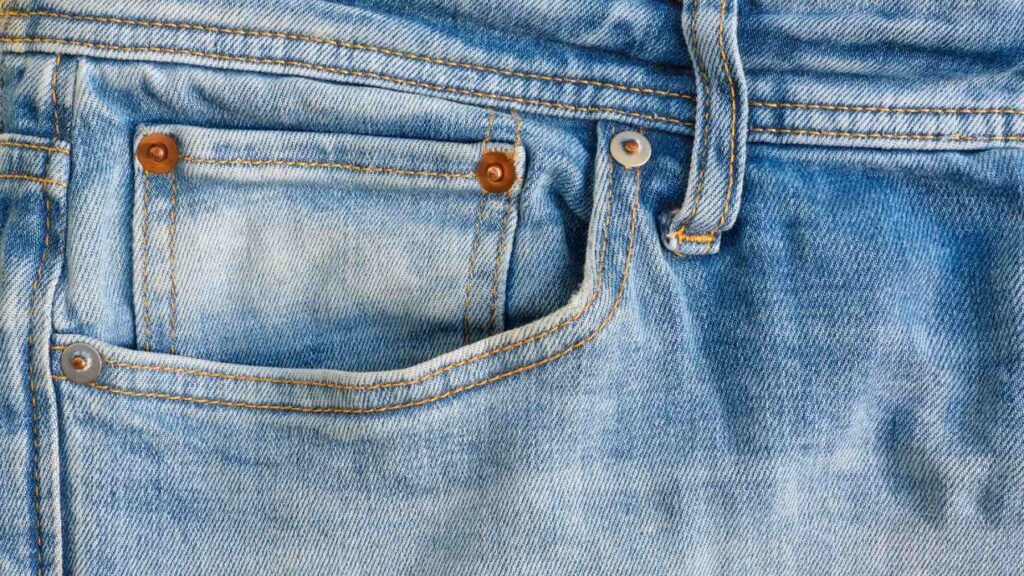Are you wearing jeans right now? If so, try this: stand up, check your front pocket corners, and you’ll see a metal button the size of a pea. It isn’t decoration. It’s a rivet—a tiny anchor dreamed up to stop your jeans from blowing out at the seams, and it’s been doing that job since 1873, when tailor Jacob Davis teamed up with Levi Strauss to patent the idea.
Why put metal on a piece of clothin?
Back then, the American West was hard on clothes. Miners, lumbermen, and railroad crews needed pants that could take a beating. Davis noticed that pocket corners were the weak spot; hands, tools, and gold pans strained the stitching until it ripped.
His fix was brilliantly simple: add a metal button (really a copper rivet) at points of stress so the seam couldn’t rip away from the fabric.
Jeans: a sewn masterpiece
Rivets were only a small part of the durability story. Jeans earned their reputation because the whole build was over-engineered for work. By the 1910s, Levi’s had moved to a flat-felled inseam, the double-stitched construction that runs from the inner leg to the crotch. It locks the raw edges inside the seam, resists chafing, and adds strength where pants take the most abuse. If you press your jeans flat, you can see the telltale twin rows of stitching.
Another quiet reinforcement is the bar tack; a dense zigzag stitch you’ll spot at belt-loop bases, fly ends, and pocket corners. Bar tacks take over when a rivet would be bulky or scratchy; they spread stress across the fabric and keep small tears from becoming big ones. Many modern jeans use both: rivets where contact is minimal and bar tacks where comfort and furniture demand mercy.
And that tiny front pocket? It wasn’t designed for shopping cart coins or guitar picks. It’s the watch pocket, added so 19th-century wearers could keep a pocket watch secure on the job. Today it’s tradition more than necessity, but the DNA is pure function.
Denim, both a piece of clothing and fabric
Durability also lives in the cloth. Classic denim is a 3×1 twill, a warp-faced weave where indigo-dyed warp yarns pass over three weft yarns before going under one. The result is the familiar diagonal rib, a tough structure that resists abrasion and drapes well once broken in. Early work jeans used hefty, all-cotton denim; it was stiff at first, then molded to the body and could endure seasons of rough use—the perfect canvas for a metal button to reinforce.
Modern jeans added a new chapter: elastane (spandex/Lycra). Stretch denim arrived in the late 1970sand took off in the 1980s, letting jeans fit closer while feeling easier to move in. If you like a skinny fit, thank elastane. The trade-off? Lab tests show that denim with elastane can have lower tear strength than comparable 100% cotton fabric, especially after finishing and abrasion—one reason stretch jeans feel soft and forgiving but don’t always age like rigid pairs.
So the next time you tug on your favorite pair, spare a glance at that metal button on the pocket corner. It’s a 19th-century hack still doing honest work. Jeans keep evolving—bar tacks instead of back-pocket rivets, felled inseams refined by industrial sewing, stretch fibers for modern fits—but the core idea remains the same: solve a real problem so the garment lasts. In a world of trends, that little metal button is a reminder that function never goes out of style. And that’s why the metal button belongs on your jeans—patented, proven, and still punching above its weight.

